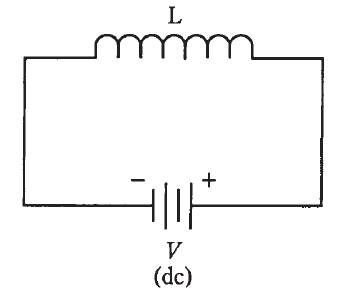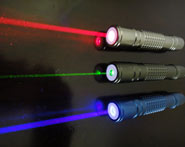


 الفيزياء الكلاسيكية
الفيزياء الكلاسيكية
 الكهربائية والمغناطيسية
الكهربائية والمغناطيسية
 علم البصريات
علم البصريات
 الفيزياء الحديثة
الفيزياء الحديثة
 النظرية النسبية
النظرية النسبية
 الفيزياء النووية
الفيزياء النووية
 فيزياء الحالة الصلبة
فيزياء الحالة الصلبة
 الليزر
الليزر
 علم الفلك
علم الفلك
 المجموعة الشمسية
المجموعة الشمسية
 الطاقة البديلة
الطاقة البديلة
 الفيزياء والعلوم الأخرى
الفيزياء والعلوم الأخرى
 مواضيع عامة في الفيزياء
مواضيع عامة في الفيزياء|
Read More
Date: 8-5-2021
Date: 20-4-2021
Date: 6-5-2021
|
Coils and direct current
Suppose that you have some wire that conducts electricity very well. What will happen if you wind a length of the wire into a coil and connect it to a source of dc, as shown in Fig. 1? The wire will draw a large amount of current, possibly blowing a fuse or overstressing a battery. It won’t matter whether the wire is a single-turn loop, or whether it’s lying haphazardly on the floor, or whether it’s wrapped around a stick. The current will be large. In amperes, it will be equal to I = E/R, where I is the current, E is the dc voltage, and R is the resistance of the wire (a low resistance).

Fig. 1: A coil connected across a source of dc.
You can make an electromagnet, as you’ve already seen, by passing dc through a coil wound around an iron rod. But there will still be a large, constant current in the coil. The coil will probably get more or less hot, as energy is dissipated in the resistance of the wire. The battery, too, or power supply components, will become warm or hot. If the voltage of the battery or power supply is increased, the wire in the coil, iron core or not, will get hotter. Ultimately, if the supply can deliver the necessary current, the wire will melt.



|
|
|
|
حقن الذهب في العين.. تقنية جديدة للحفاظ على البصر ؟!
|
|
|
|
|
|
|
"عراب الذكاء الاصطناعي" يثير القلق برؤيته حول سيطرة التكنولوجيا على البشرية ؟
|
|
|
|
|
|
|
جمعية العميد تعقد اجتماعها الأسبوعي لمناقشة مشاريعها البحثية والعلمية المستقبلية
|
|
|